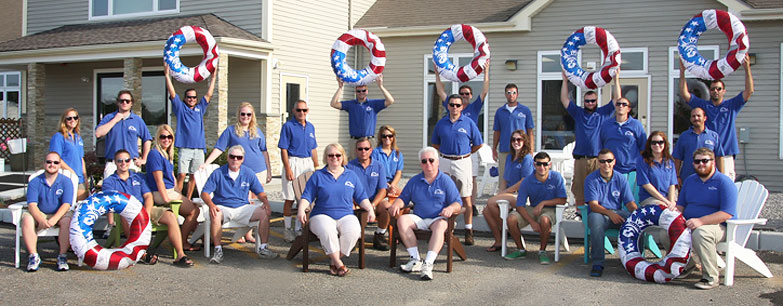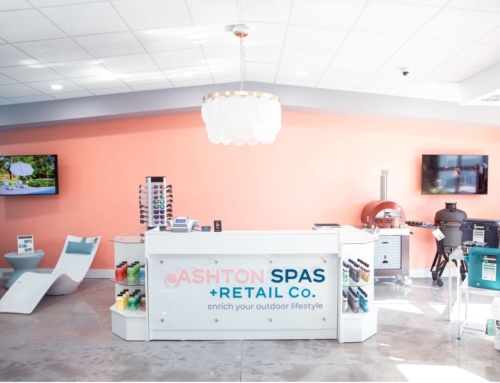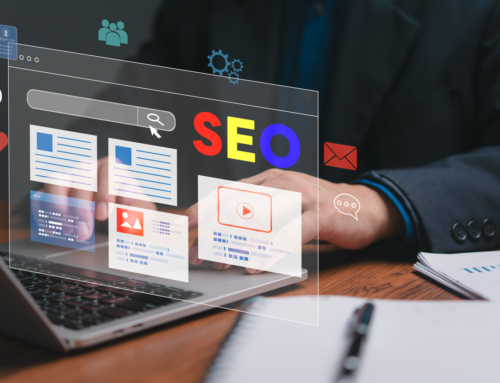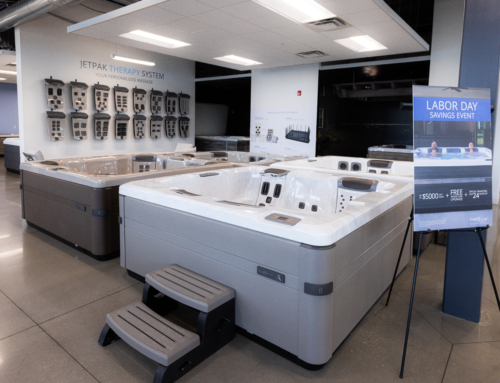We’ve heard too many sad stories of retailers and small businesses going out of business. However, we have also heard of hot tub businesses that are growing, retailers who consistently increase their spa sales and profitability. How are they succeeding? What are they doing right? How are they able to stand out from the competition? The bigger question is: “What can you do to create a smarter business, build for growth, profitability, and sustainability?”
Sorry, we’re not about to give you that magic wand or introduce you to a new guru who will make you successful. And you can’t simply work on one thing or just wait for customers to walk into your store. There are, however, a few key factors recognized as necessary for small business success. One of these factors, shared by nearly every thriving small business, is a strong sense of identity. In fact, identity consistently shows up as a key indicator of business success.
A defined identity influences performance
How does identity drive organizational performance? In other words, how does defining your hot tub business translate into greater profits? Defining your business is essentially declaring your company’s mission, or describing its function, markets, and competitive advantages. In their 2013 research, Gallup pointed out five primary benefits of having a business definition.
First, identity drives loyalty across generations, therefore driving down the cost of turnover and preventing the loss of key employees, especially among Millennials.
Second, identity fosters customer engagement, promoting brand differentiation, consumer passion, and brand engagement.
Third, identity improves strategic alignment, which helps leaders establish and balance priorities, set performance goals, and align rewards and compensation at all levels.
Fourth, identity brings clarity, guiding decision making and judgment.
And fifth, identity provides a reliable tool for assessing employees’ attitudes about their work and how it connects with the company’s purpose.
Business identity = Retailer success
Though numerous studies have found that the most successful retailers are those with a clearly defined business, it is still common for retailers over time to forget what they had set out to do. A survey by Strategy& shows that companies have a harder time understanding their own strengths than they have understanding their customers.
The clarity of who you are leads to the conviction of what you need to do, in turn, giving you direction when forging ahead.
The clarity of who you are sets the tone for all business decisions. It not only influences how you act, but also what you sell, how you sell it, what type of client you attract, how your staff behaves, what your store looks like, where it’s located, and what type of advertising you do. The clarity of who you are leads to the conviction of what you need to do, in turn, giving you direction when forging ahead.
Let’s look at one example of an effectively developed business identity. As The Most Trusted Name in Pools & SpasTM, Pool & Patio Center of Coventry, Rhode Island, defines itself as:
… the premier source for pools, hot tubs, spas, swimming pool and spa chemicals, pool and spa water chemistry products and accessories. We are a family-owned business where our slogan is the icon of our commitment to customer service and satisfaction. We truly care about our customers, our staff and our reputation so your satisfaction will always be the foundation of our business.

source: www.poolandpatiocenter.com
It is clear that the Pool & Patio Center values customer trust and satisfaction first and foremost. When it comes to developing a strategic course of action, this retailer can base every business decision on how it affects customer satisfaction.
How to more clearly define your business
Does your business have a clear identity? Can you, in one to three sentences, define exactly what your retail business does better than the competition? Does this description tie in with your business’s core values and your vision for the company?
At the risk of getting a bit academic, here are some tips on developing your business definition based on Jay Barney’s Resource-Based Value Theory. A strategic framework most MBA classes teach in the first semester, the RBV Theory asserts that a business can strategically use its resources to maximize returns. Specifically, it outlines how resources shape a business’s business definition, and ultimately its competitive advantage potential.
Resources and capabilities
The first inputs into Barney’s framework involve listing your company’s resources (both tangible and intangible) along with its capabilities. According to Barney, tangible resources are “assets that can be observed and quantified,” like property, equipment, personnel, and technology. Intangible resources are “assets that typically are rooted deeply in the firm‘s history and have accumulated over time.” Examples of intangible resources include knowledge, reputation, and supplier or buyer relationships.
Capabilities, on the other hand, can be defined as a business’s “capacity to deploy resources that have been purposely integrated to achieve a desired end state.” In normal speak, resources refer to what an organization owns, whereas capabilities represent what an organization can do. A retailer’s capabilities may include delivering exceptional customer service as the result of a strong organizational culture that demonstrates superior staff selection, training, and communication processes.
Core competencies and competitive advantage
Once resources and capabilities are outlined, core competencies can be recognized. What is it that you do better than the rest?
 First described by business academics Prahalad and Hamel (1990), core competencies are specialized activities that a business performs as a result of how resources and capabilities are organized to create value for the customer. Prahalad and Hamel’s described Honda’s expertise in engines as a classic example of core competency. Honda was able to exploit this core competency to develop a variety of quality products from lawn mowers and snow blowers to trucks and automobiles.
First described by business academics Prahalad and Hamel (1990), core competencies are specialized activities that a business performs as a result of how resources and capabilities are organized to create value for the customer. Prahalad and Hamel’s described Honda’s expertise in engines as a classic example of core competency. Honda was able to exploit this core competency to develop a variety of quality products from lawn mowers and snow blowers to trucks and automobiles.
Application of these competencies is what gives one retailer a competitive advantage over another. That’s not to say they are unique to one business necessarily. A core competency may be an industry practice that one business does better than its competitors or a set of industry practices that allows a business to be more efficient. In the example shared above Pool & Patio Center clearly has a competency in customer service that they use to differentiate themselves from the competition.
Is your competitive advantage sustainable?
As if that wasn’t enough…To sustain advantage, a business should ensure that its resources, capabilities, and core competencies meet the VRIN test—i.e., they should be valuable, rare, costly to imitate, and non-substitutable. A system of resources, capabilities, and core competencies that meets all four requirements can bring sustained competitive advantage for the company.
If we go back again to our Pool & Patio example, we can again see how their service core competency passes the test. The persistence of localized hot tub retailers in the hot tub industry acknowledges that customers highly value the personalized service experience at their local retail store. Retailers also recognize that truly exceptional service can be more than challenging to produce as it not only requires selection of the right personnel, but supporting training and organizational culture.
Of course, identifying your business’s competitive advantage is not the last step in the process. What you do with this identity is just as important as the process to develop it. By consistently reinforcing the concept to your entire staff, this practice is sure to keep you one step ahead of that competitor down the street.









Leave A Comment